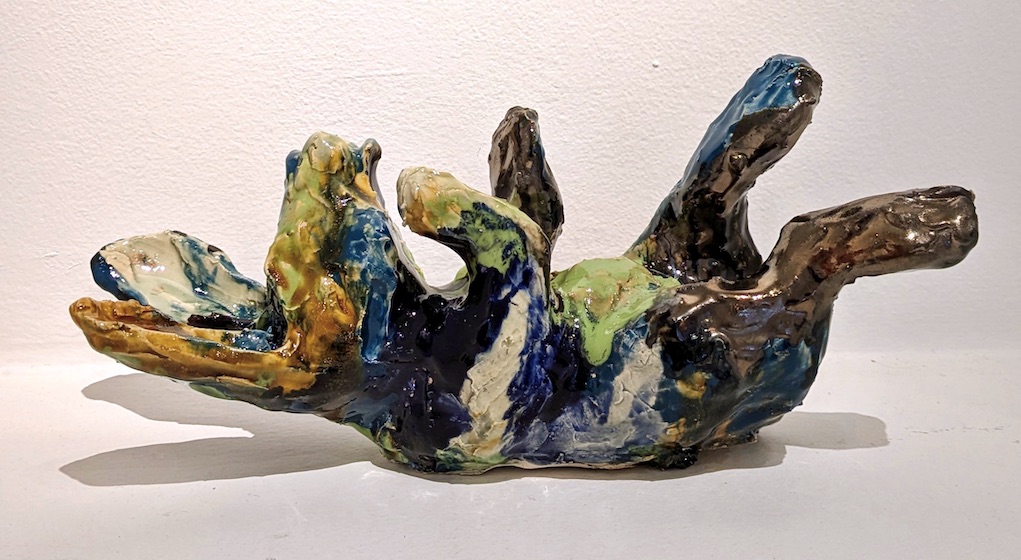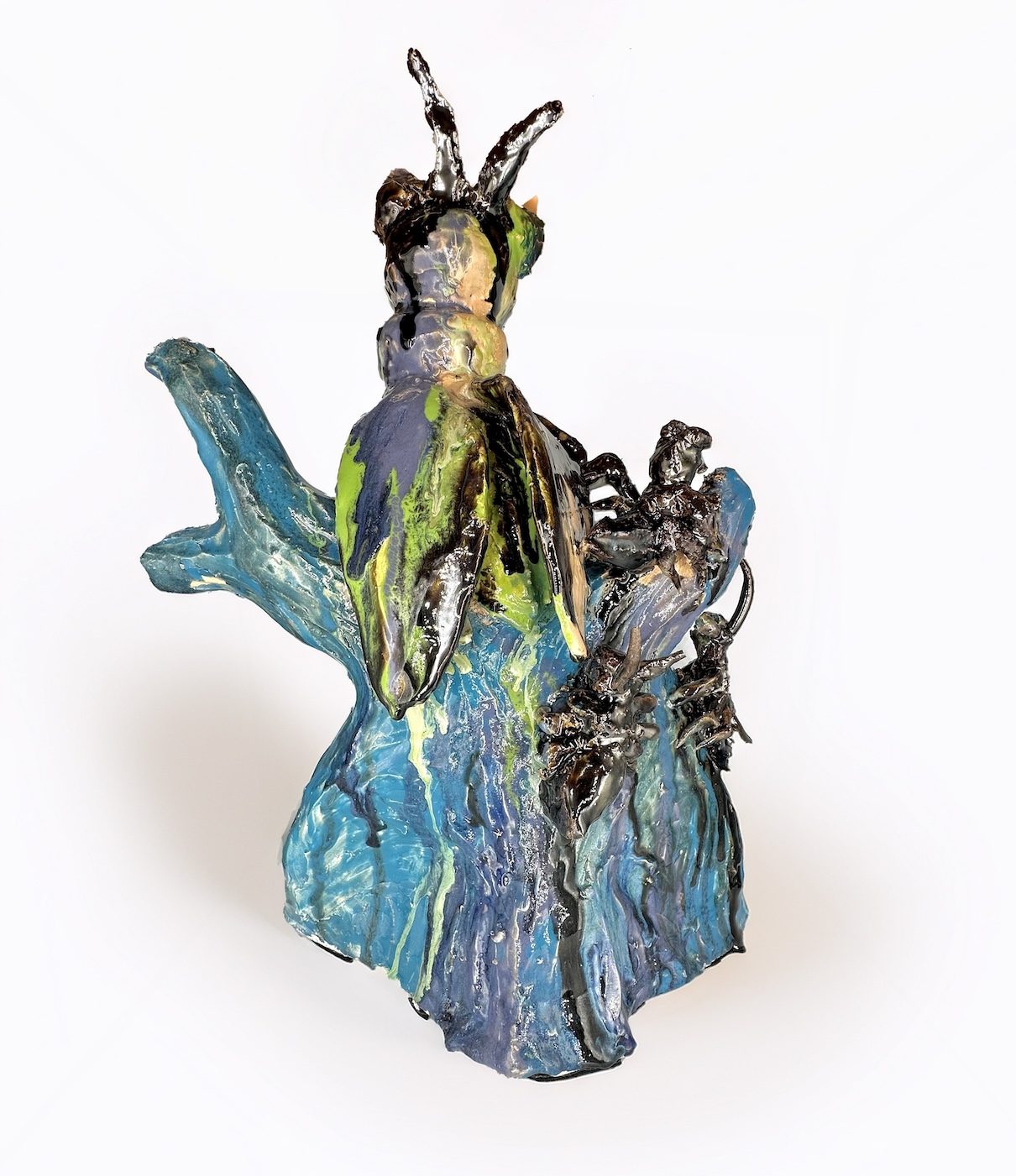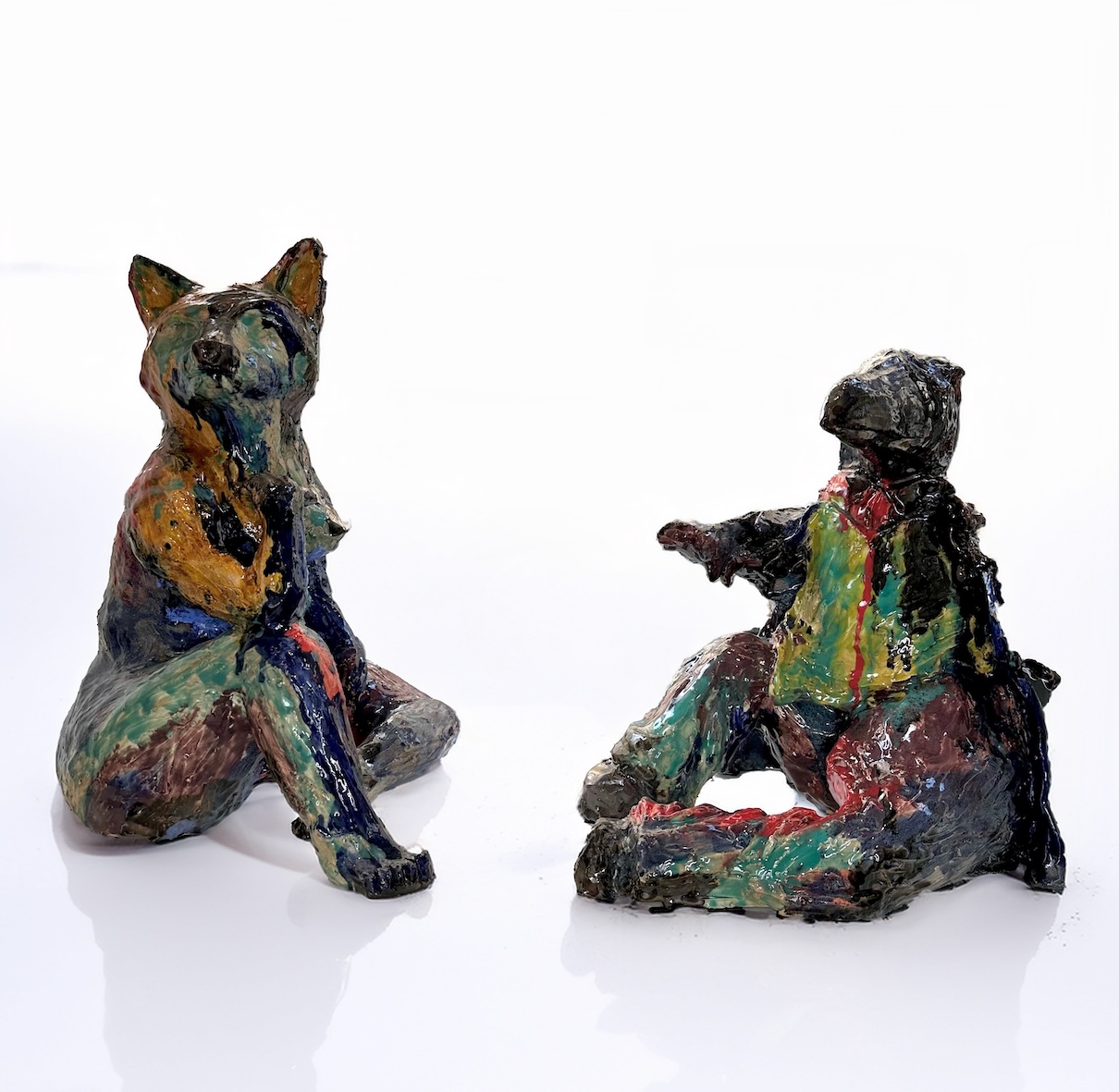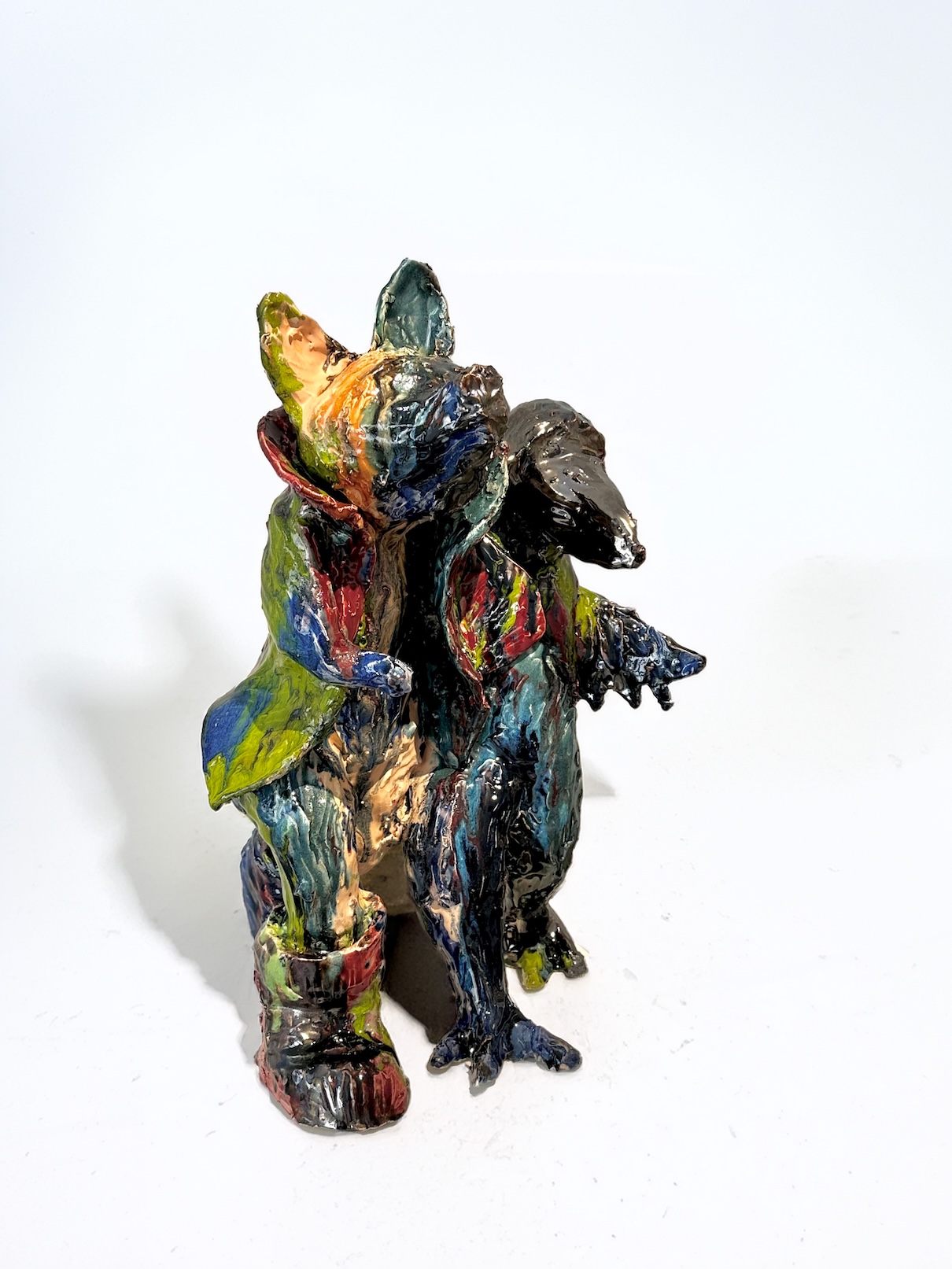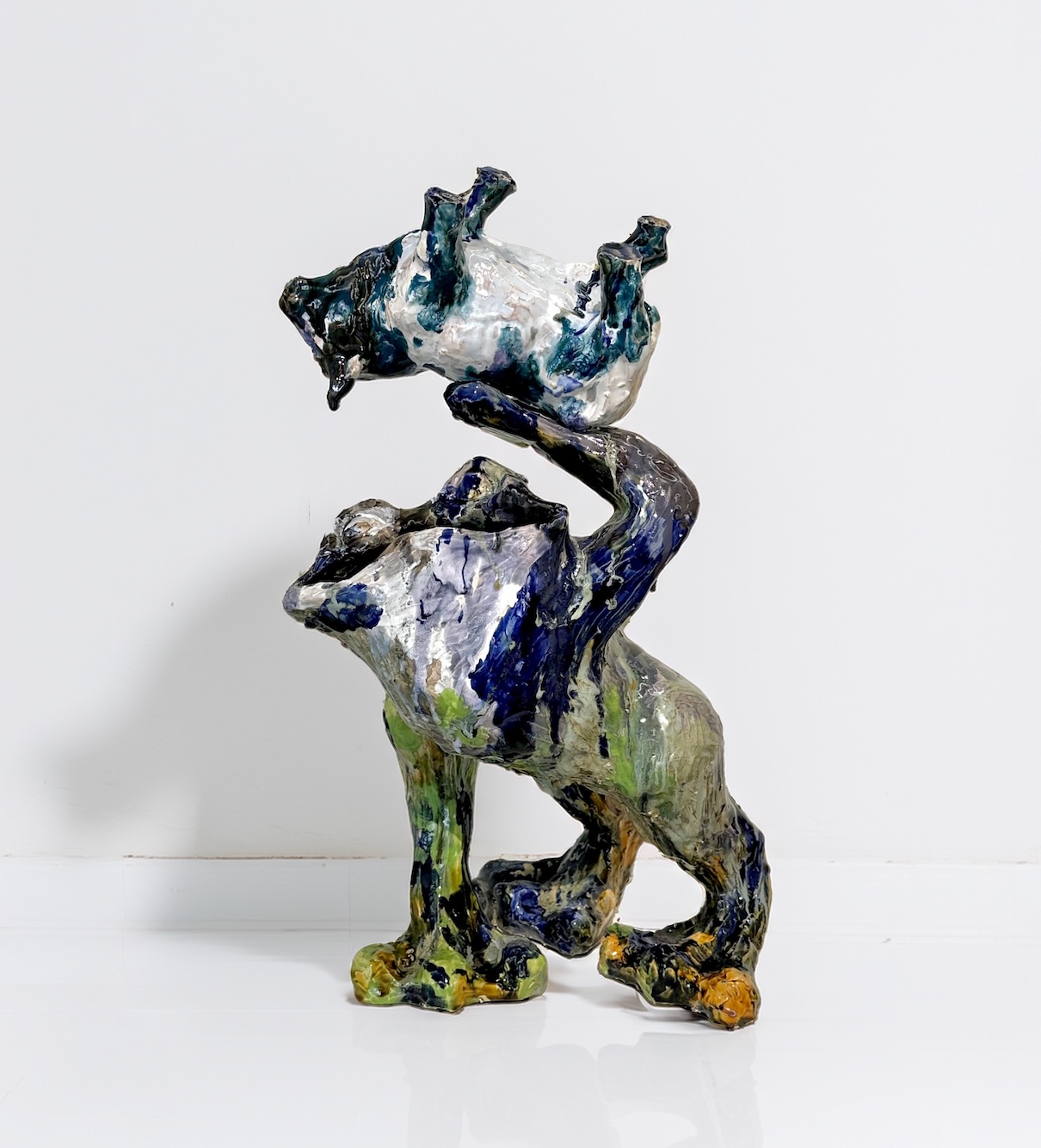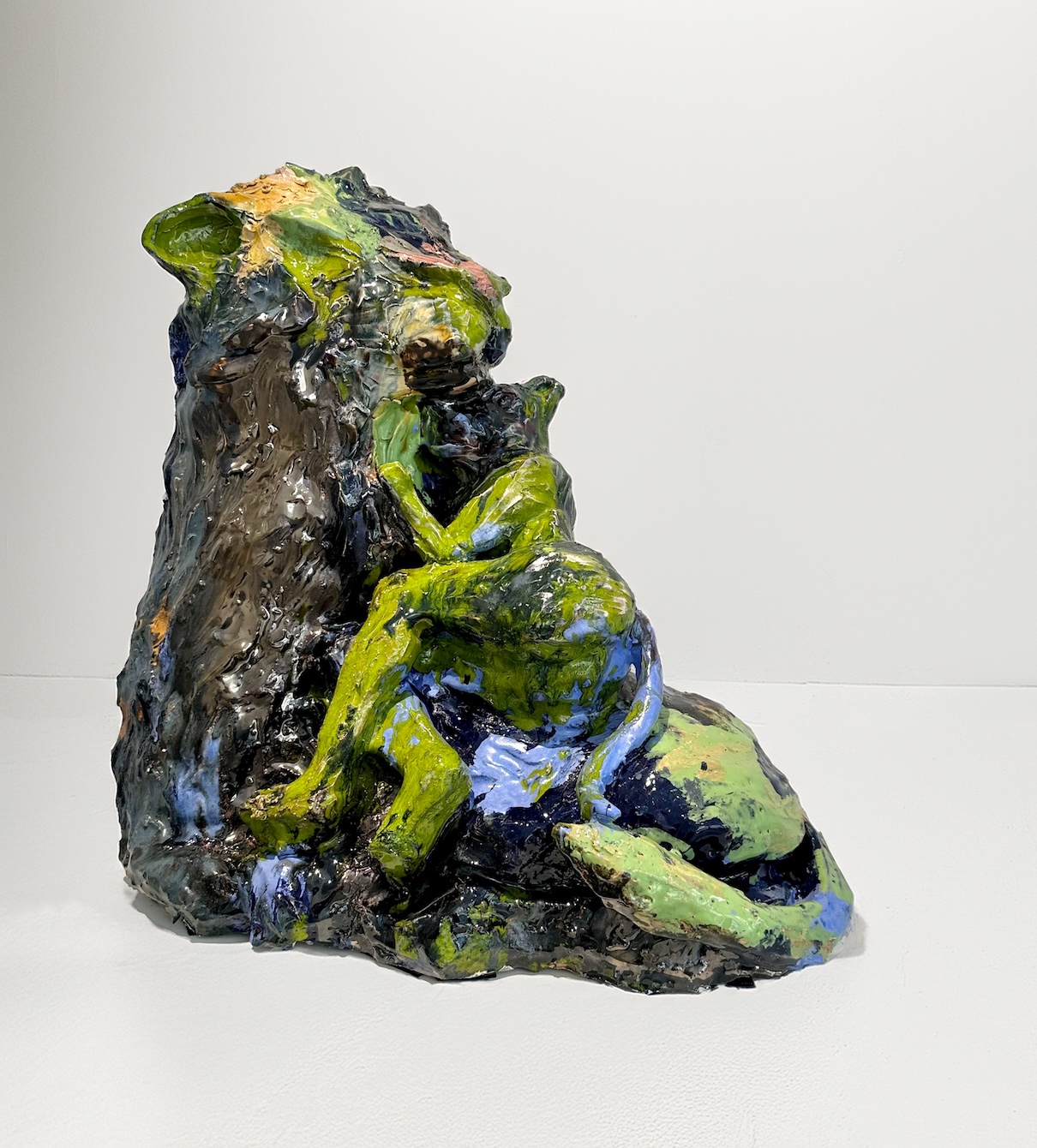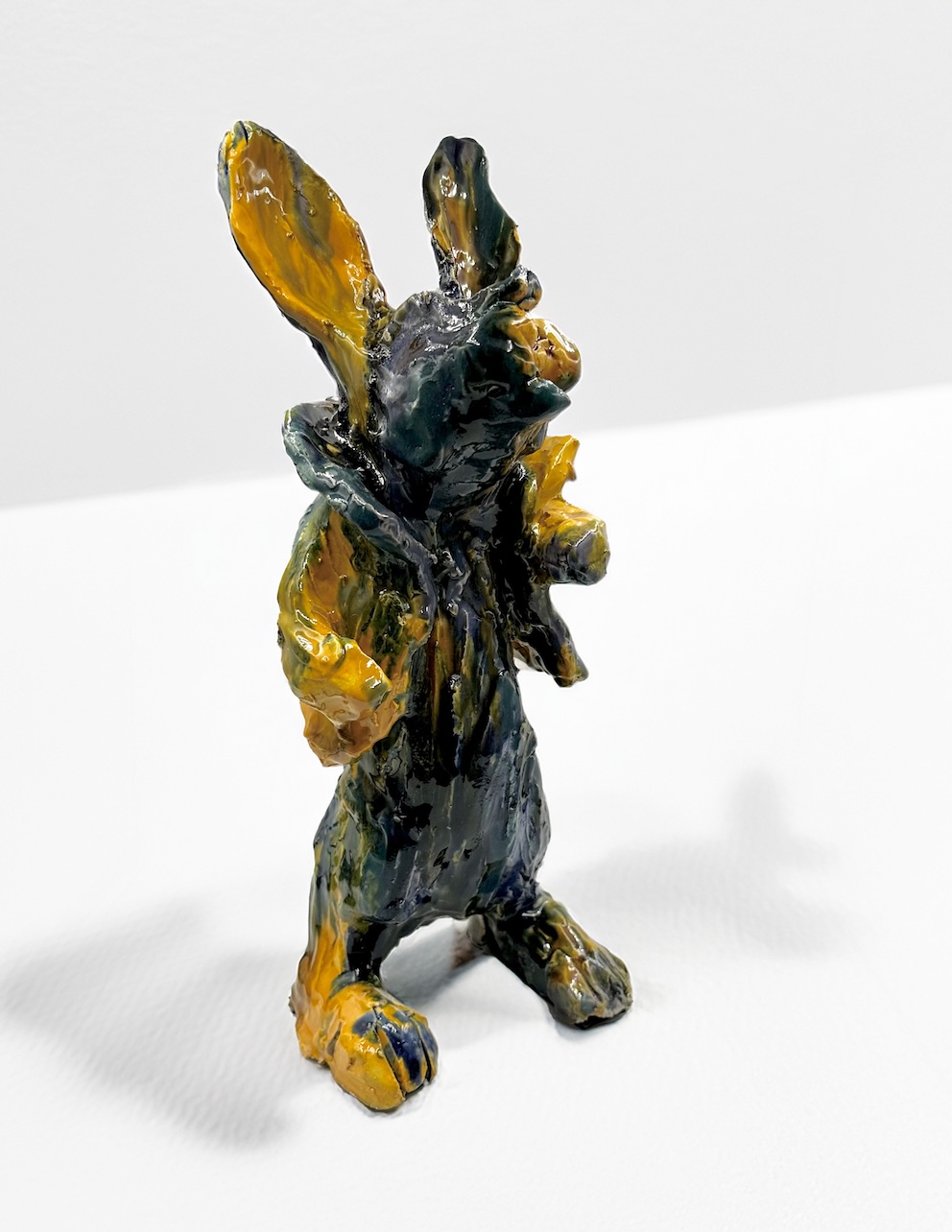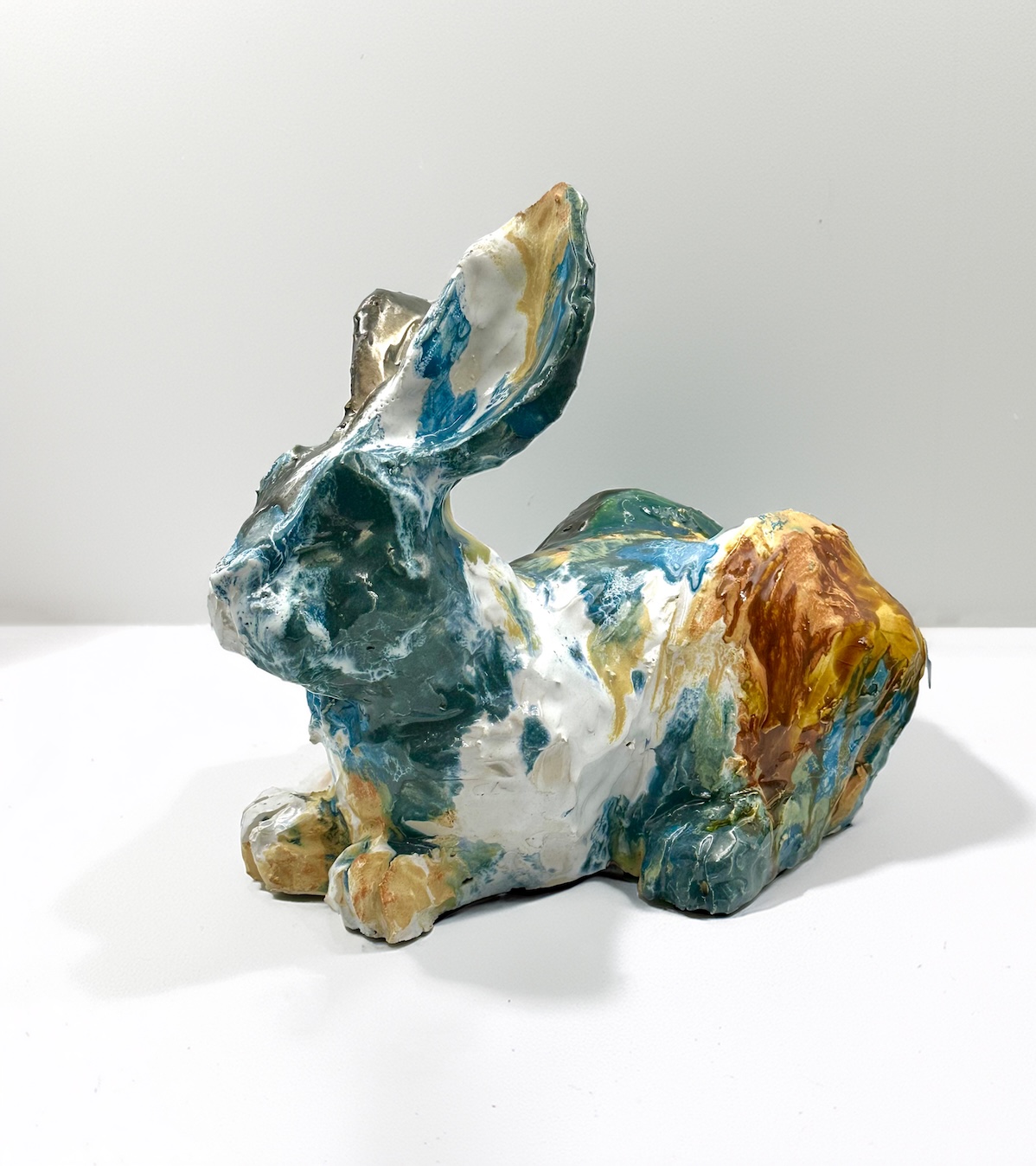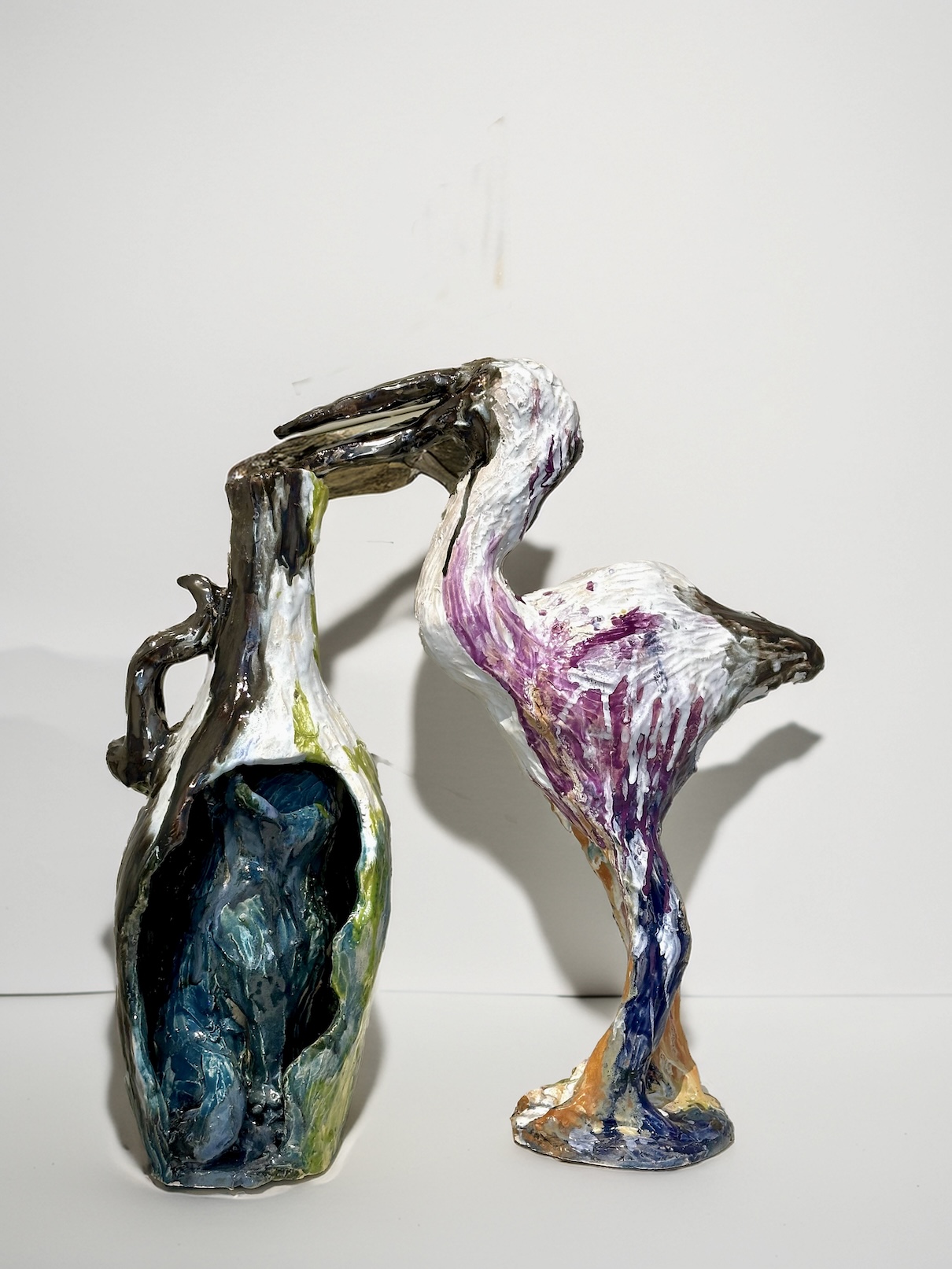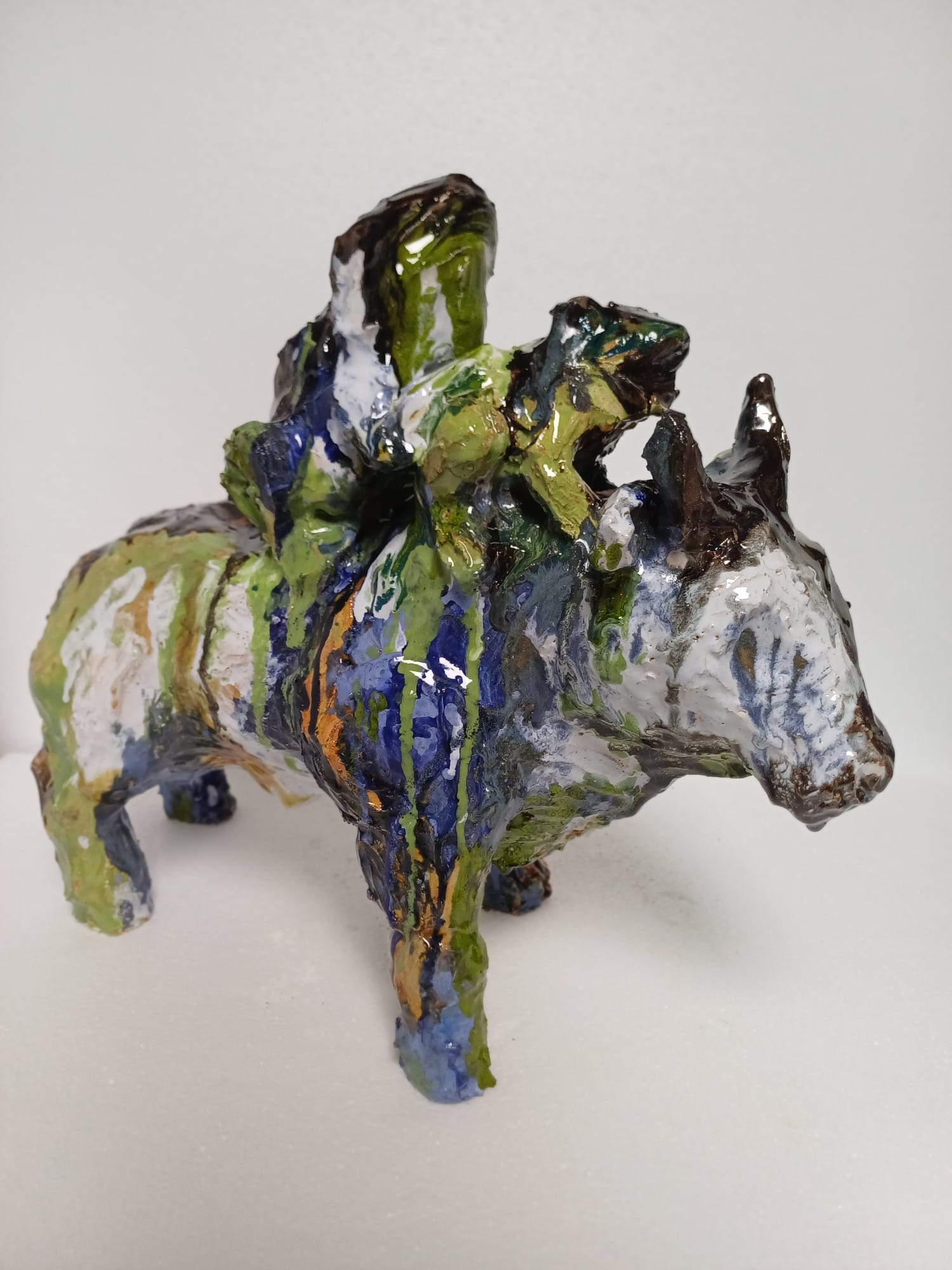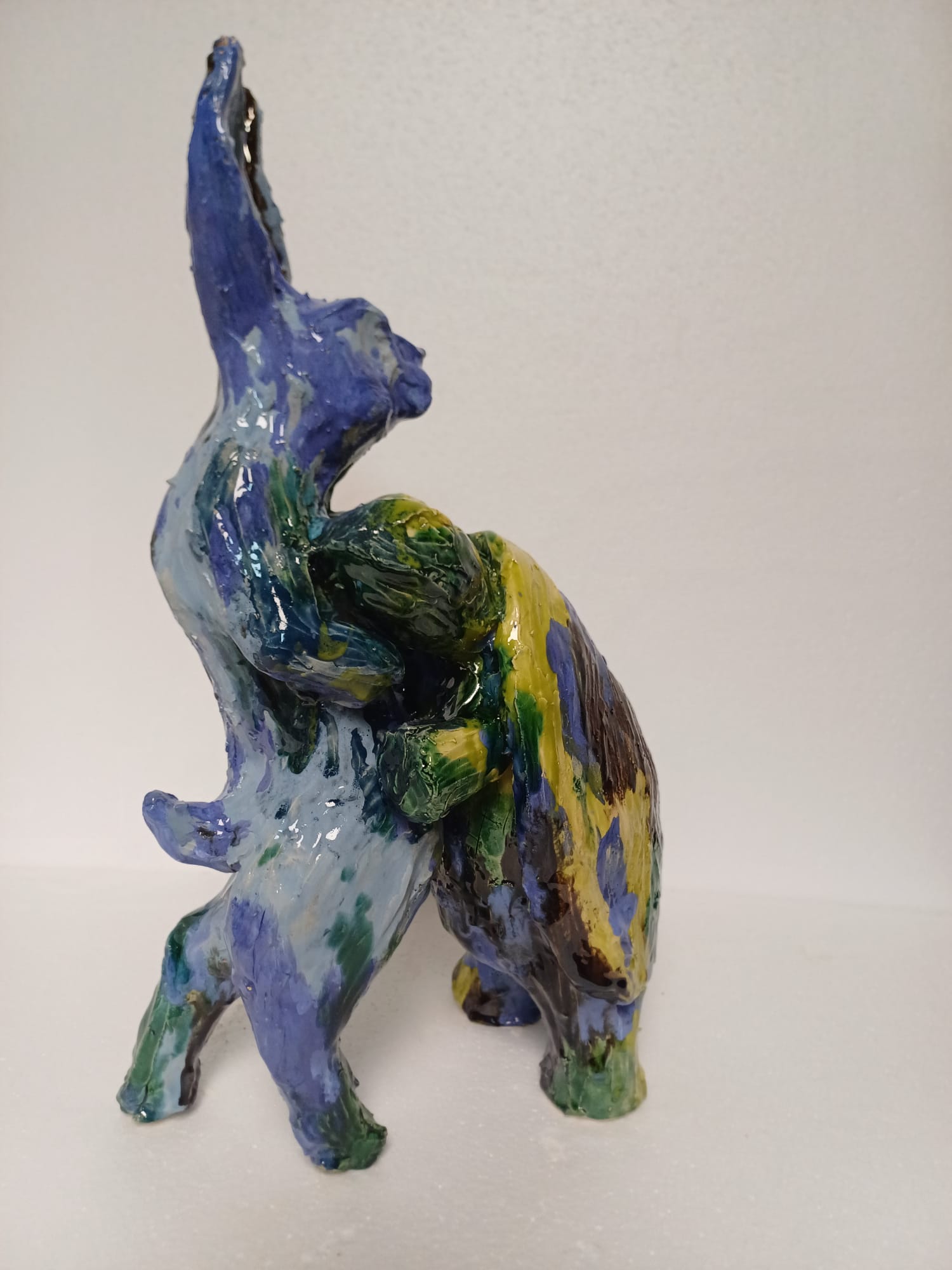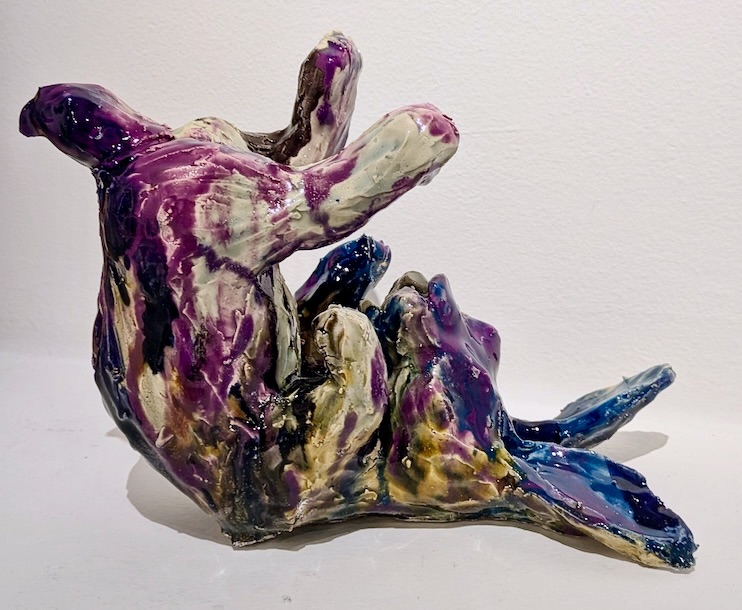Exhibition
Marina Le Gall
Fables
Galerie 30 Penthievre
Galerie Françoise Livinec is pleased to present Fables , a solo exhibition by Marina Le Gall, who revisits Jean de La Fontaine?s Fables through a ceramic bestiary that is playful, offbeat, and strikingly relevant. With sharp humor and bold visual language, the artist picks up where the great fabulist left off: using animals to reflect on the complexities of human behavior, social dynamics, and moral ambiguity.
"The animal is a vessel for speaking about something else.? ? Marina Le Gall
La Fontaine today: social satire and ambiguous morals
In 17th-century France, Jean de La Fontaine crafted deceptively simple animal fables to critique the power structures and moral contradictions of his time. Under the guise of fables for children, he offered ironic, often unsettling lessons on domination, deceit, vanity, and injustice. His genius lay in leaving space for interpretation ? the moral was never dogmatic, but always nuanced.
Marina Le Gall carries this legacy forward, but translates it into form. Through expressive ceramic sculptures, she shifts the fables into a contemporary register. Her animals ? grotesque, exaggerated, strangely familiar ? become composite figures of our modern society. Humor here is not decorative; it is disruptive, a tool for rethinking the world around us.
The animal as a mirror of ourselves
Each sculpture in Fables Animales is an open allegory. Le Gall?s creatures portray characters we recognize all too well: anxious overachievers, self-satisfied influencers, passive opportunists, isolated socialites. Their charm ? wide eyes, slumped poses, absurd costumes ? belies a quietly incisive critique. These animals speak the language of our contradictions. They don?t offer easy morals, but hold up a mirror to our time.
Ceramics as a living, irreverent medium
Far from polished formalism, Marina Le Gall embraces an instinctive, liberated approach to ceramics. Her sculptures are uneven, expressive, and delightfully awkward. They draw from a deep craft tradition, yet reject all notions of preciousness or solemnity. In doing so, she reclaims ceramics as a space for irony, narrative, and experimentation ? a medium both tactile and subversive.
A fabled ecosystem
The exhibition unfolds like a miniature ecosystem, a stage where each creature interacts, reacts, or competes with the others. As in La Fontaine?s world, relationships take precedence over individuals. No one stands alone ? not the lion, not the frog, not the fox. The balance is unstable, the alliances unclear. Viewers are left to construct their own moral readings, or to question whether any are still possible.
